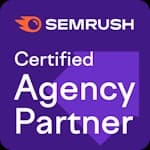On-page optimization is a crucial aspect of SEO that involves optimizing individual web pages to rank higher in search results and earn more relevant traffic. In this comprehensive guide, we'll explore the best on-page optimization techniques specifically tailored for businesses in Guyton. Whether you’re a local entrepreneur or a digital marketer, mastering these strategies will enhance your website's visibility and performance.
What is On-Page Optimization?
On-page optimization refers to the practices involved in optimizing a website's content, HTML source code, and overall structure to improve its relevance and influence on search engines. Key elements include:
- Content quality and keyword usage
- Meta tags optimization
- URL structure
- Internal linking
- Image optimization
1. Keyword Research
Effective on-page optimization begins with thorough keyword research. Identify keywords that your target audience in Guyton is actively searching for. Utilize tools like Google Keyword Planner to find relevant keywords with good search volume and manageable competition.
2. Optimizing Title Tags and Meta Descriptions
Your title tags and meta descriptions should accurately reflect your page content while incorporating target keywords. Best practices include:
- Title Tags: Keep them under 60 characters and include your primary keyword near the beginning.
- Meta Descriptions: Aim for 150-160 characters, summarizing your content effectively while enticing users to click.
3. Creating High-Quality, Relevant Content
Content is king in on-page optimization. Create valuable, engaging, and informative content that addresses your audience's needs. Consider the following:
- Use subheadings to break up content and make it scannable.
- Incorporate relevant keywords naturally without keyword stuffing.
- Regularly update your content to keep it fresh and relevant.
4. URL Structure
Optimize your URLs for clarity and searchability. A good URL structure should be:
- Short and descriptive.
- Include relevant keywords.
5. Internal Linking
Effective internal linking guides visitors to explore more of your website while also enhancing SEO. Link to relevant articles and pages within your site to improve user engagement and distribute page authority.
6. Image Optimization
Images contribute to user experience but should be optimized to prevent slow loading times. Best practices include:
- Use descriptive file names and alt tags that reflect the image content.
- Compress images to reduce file size without compromising quality.
Conclusion
Implementing effective on-page optimization strategies is essential for improving your website's performance and driving local traffic in Guyton. By focusing on keyword research, optimizing meta tags, creating high-quality content, and leveraging on-page elements, you can enhance your website's visibility and align with your audience's search intent. For expert assistance and tailored SEO solutions, partner with Prebo Digital today!







